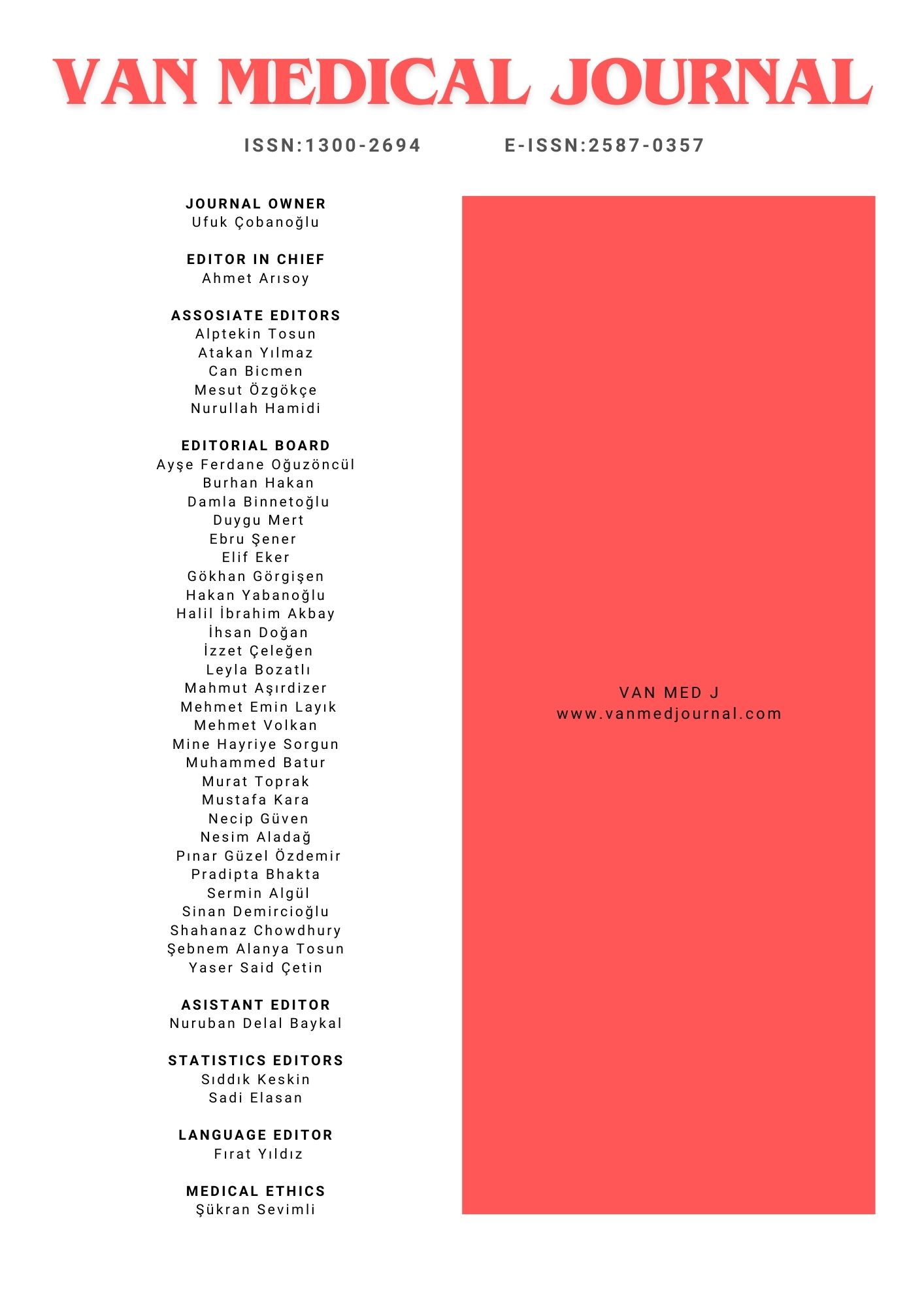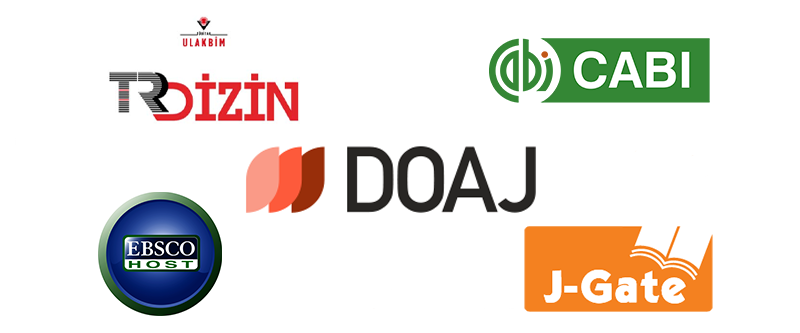Instructions to Authors
Copyright Agreement and Authorship Acknowledgement
ICMJE Potential Conflict of Interest Disclosure Form
Writing Notes for Authors
Article Retraction Form
Article Structure Sample
1. General Information & Submission
Van Medical Journal accepts manuscripts via its online submission system. Submissions by email are not accepted. The journal adheres to the highest standards of publication ethics and expects authors to comply with the guidelines outlined below.
Peer Review: All submitted manuscripts undergo a rigorous double-blind peer review process.
Fees: There are no submission or publication fees (APCs).
Guidelines for Study Types: Different types of studies should follow specific guidelines:
- Randomized studies: CONSORT
- Observational studies: STROBE
- Systematic reviews: PRISMA
- Case reports: CARE
Submission Checklist
Before submitting, ensure you have the following:
- Cover Page: A separate file containing author details.
- Main Manuscript: Anonymous (no author names), including Title, Abstract, Keywords, Main Text, References, Tables, and Figure Legends.
- Forms: Copyright Agreement Form, ICMJE Conflict of Interest Form, and (if applicable) Ethics Committee Approval.
- Plagiarism Report: A PDF report from iThenticate/Turnitin showing a similarity rate below 20%.
2. Ethical Requirements & Authorship
Authorship Criteria:
The journal follows the ICMJE criteria. All authors must meet all four conditions:
- Substantial contributions to the conception/design or data acquisition/analysis.
- Drafting the work or critically revising it.
- Final approval of the version to be published.
- Agreement to be accountable for all aspects of the work.
Use of AI Tools:
Artificial intelligence tools (e.g., ChatGPT, LLMs) cannot be listed as authors. If AI tools were used for writing assistance, language editing, or data processing, this must be explicitly declared in the "Materials and Methods" or "Acknowledgments" section. Authors are fully responsible for the content generated by these tools.
Clinical Trial Registration:
For clinical trials, the Trial Registration Number (e.g., ClinicalTrials.gov ID) and the date of registration must be explicitly stated at the end of the Abstract and in the Methods section.
Sex and Gender Reporting (SAGER Guidelines):
Authors should use the terms "sex" (biological) and "gender" (sociocultural) carefully. Please report the sex and/or gender of study participants and the methods used to determine them.
Data Sharing Policy:
Authors must include a "Data Availability Statement" at the end of the manuscript. Choose one of the following:
- "The data that support the findings of this study are available from the corresponding author upon reasonable request."
- "The datasets generated during the current study are available in the [NAME] repository, [LINK]."
- "Data sharing is not applicable to this article as no datasets were generated or analyzed."
3. Manuscript Preparation Guidelines
Language & Style:
- Language: Manuscripts must be in English.
- Format: Use Times New Roman, 12-point font, 1.5 line spacing, with 2.5 cm margins.
- Page Numbers: Number pages at the bottom right.
- Anonymity: Do not include author names or affiliations in the main manuscript file.
A. Cover Page (Separate File)
Must include:
- Title: Full title (max 150 chars) and Short Title (Running Head, max 40 chars).
- Author Details: Full names, academic titles, affiliations (Department, Faculty, University, City, Country) of all authors.
- ORCID IDs: The ORCID ID numbers for all authors.
- Corresponding Author: Name, address, phone, and email.
- Declarations: Funding sources, conflict of interest statement, and details of any previous presentation (meeting name, date, place).
B. Main Manuscript Structure
Table 1: Limits by Article Type
Article Type |
Word Limit |
Abstract Limit |
References |
Tables |
Figures |
Original Article |
3000 |
200-300 |
30 |
5 |
5 |
Invited Review |
3000 |
200-300 |
60 |
5 |
5 |
Case Report |
1500 |
150-250 |
15 |
2 |
5 |
Letter to Editor |
750 |
None |
5 |
- |
- |
1. Original Article
- Abstract: Structured as: Introduction, Materials and Methods, Results, Conclusion.
- Keywords: 3-6 keywords from MeSH.
- Main Text Sections: Introduction, Materials and Methods (including Statistics), Results, Discussion, Limitations, Conclusion.
2. Case Report
- Focus: Rare diseases, new diagnostic/treatment methods.
- Abstract: Unstructured (Single paragraph).
- Main Text Sections: Introduction, Case Report, Discussion, Conclusion.
3. Invited Review
- Abstract: Unstructured.
- Note: Written by experts upon invitation.
4. Letter to the Editor
- No Abstract.
4. Specific Section Guidelines
Materials and Methods:
- Ethics: Explicitly state the name of the Ethics Committee, approval date, and number. Do not reveal the institution name if it compromises blinding (use "blinded for review").
- Statistics: Present under a separate subheading. Specify the software used and the statistical tests applied.
- Units: Use International System of Units (SI) (e.g., kg, mL, °C).
- Microorganisms: Scientific names should be italicized. Use full name at first mention (e.g., Pseudomonas aeruginosa), then abbreviated (e.g., P. aeruginosa).
- Pharmaceuticals: Use generic names (lowercase). If a trade name is necessary, capitalize it and include the manufacturer's name and location in parentheses (e.g., ASPIRIN, Bayer, Germany).
- Abbreviations: Define abbreviations at their first occurrence. Avoid using them in the Abstract.
Results:
- Present findings clearly. Do not repeat data found in tables/figures within the text.
Tables and Figures:
- Tables: Embed in the main document, one per page. Number with Arabic numerals (Table 1). Include a title above and footnotes below.
- Figures: Submit as separate files (JPEG/TIFF, min 300 dpi). Include figure legends at the end of the main manuscript.
5. References
Cite references in the text using numbers in parentheses (e.g., (1), (2-4)). Number them consecutively in the order they appear.
- Recency: To ensure the study is based on current knowledge, at least 50% of the references should be from articles published within the last 5 years.
- Author Limit: List all authors if 6 or fewer. If 7 or more, list the first 6 followed by "et al."
Examples:
- Journal: Greenblatt DJ, Harmatz JS, Zinny MA, Shader RI. Effect of gradual withdrawal on the rebound sleep disorder. N Engl J Med. 1987;317(12):722-728.
- Book: Ringsven MK, Bond D. Gerontology and leadership skills for nurses. 2nd ed. Albany (NY): Delmar Publishers; 1996.
- Chapter: Phillips SJ, Whisnant JP. Hypertension and stroke. In: Laragh JH, Brenner BM, editors. Hypertension. 2nd ed. New York: Raven Press; 1995. p. 465-478.









